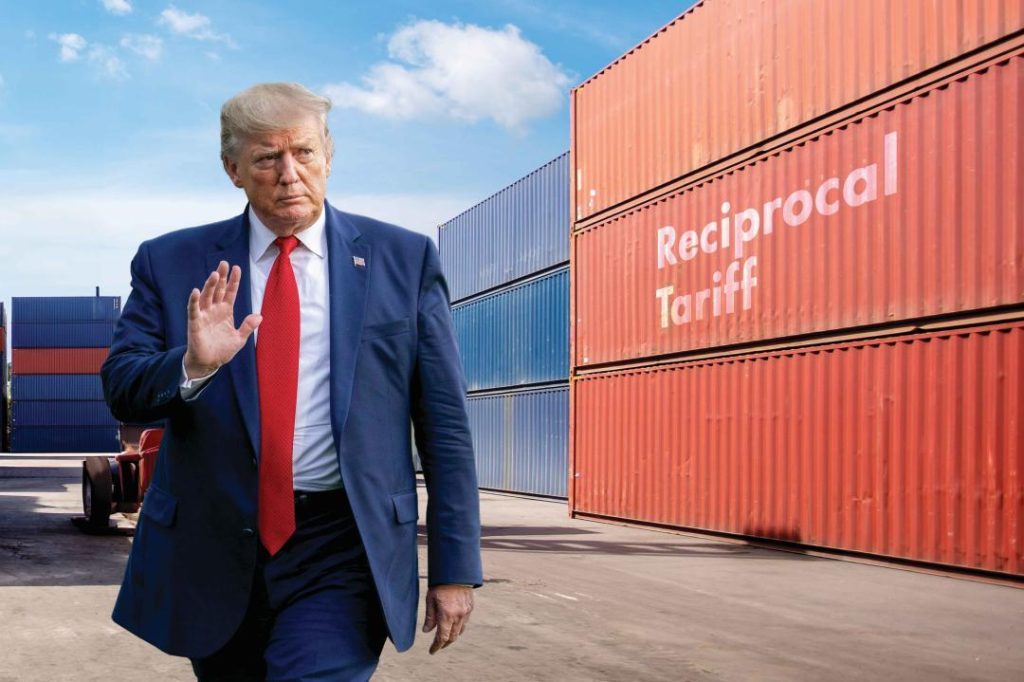
The Great Tariff War: Disruption, Diplomacy, & the Future of Trade
The global economy is once again being rocked by the waves of the ongoing tariff war. The latest announcement by the US to impose tariffs on $550 billion worth of Chinese goods has sent shockwaves across the globe, sparking fears of a full-blown trade war. Amidst this backdrop of uncertainty, India is emerging as an alternative to China, presenting an opportunity for the country to strengthen its position as a global manufacturing and logistics hub.
The tariff war between the US and China is not new, with the two nations having imposed tariffs on each other’s goods since 2018. The latest announcement by the US is a response to China’s failure to meet its commitments under the Phase 1 trade deal signed in January 2020. The deal aimed to reduce the trade deficit between the two nations and increase US exports to China. However, China failed to meet its commitments, leading the US to impose tariffs on an additional $550 billion worth of Chinese goods.
The impact of the tariff war on global trade is far-reaching. The tariffs imposed by the US on Chinese goods have led to increased costs for American consumers, with the prices of goods such as electronics, clothing, and furniture rising significantly. The tariffs have also led to a decline in US exports to China, as Chinese companies have become less interested in importing American goods due to the increased costs.
The tariff war has also had a significant impact on global supply chains. Many companies have been forced to re-evaluate their supply chain strategies, with some opting to move their production facilities to alternative countries. India, in particular, has emerged as an attractive option for companies looking to diversify their supply chains. The country’s large and growing consumer market, skilled workforce, and favorable business environment make it an attractive option for companies looking to set up manufacturing facilities.
India’s emergence as an alternative to China is not a recent phenomenon. The country has been steadily building its manufacturing capabilities over the past decade, with the government implementing a range of policies aimed at attracting foreign investment and encouraging domestic entrepreneurship. The country’s “Make in India” initiative, launched in 2014, aims to promote domestic manufacturing and increase the country’s global competitiveness.
The tariff war has provided India with an opportunity to strengthen its position as a global manufacturing and logistics hub. The country’s proximity to major markets such as Europe and the Middle East, combined with its large and growing consumer market, make it an attractive option for companies looking to diversify their supply chains. Additionally, India’s favorable business environment, with a low cost of labor and a range of government incentives, make it an attractive option for companies looking to set up manufacturing facilities.
The Indian government has been actively courting foreign companies, with the country’s Prime Minister, Narendra Modi, having made a series of high-profile visits to major economies such as the US and Europe. The government has also implemented a range of policies aimed at promoting foreign investment, including the establishment of special economic zones (SEZs) and the relaxation of foreign direct investment (FDI) rules.
India’s emergence as an alternative to China is not without its challenges, however. The country’s infrastructure is still developing, with many parts of the country lacking adequate road, rail, and air connectivity. Additionally, the country’s labor laws are still evolving, with many companies struggling to navigate the complex regulatory environment.
Despite these challenges, India is well-positioned to take advantage of the opportunities presented by the tariff war. The country’s growing consumer market, favorable business environment, and skilled workforce make it an attractive option for companies looking to diversify their supply chains. Additionally, the country’s proximity to major markets such as Europe and the Middle East, combined with its growing logistics capabilities, make it an attractive option for companies looking to establish a presence in the region.
The future of trade is likely to be shaped by the ongoing tariff war. The US-China trade war has highlighted the risks associated with trade tensions, with the global economy facing the prospect of a full-blown trade war. However, the tariff war has also presented an opportunity for countries such as India to strengthen their position as global manufacturing and logistics hubs.
As the global economy navigates the uncertainty of the tariff war, it is clear that the future of trade will be shaped by a combination of disruption, diplomacy, and the emergence of new trade patterns. The tariff war has highlighted the risks associated with trade tensions, but it has also presented an opportunity for countries such as India to strengthen their position as global manufacturing and logistics hubs.
In conclusion, the great tariff war is a complex and evolving phenomenon that is likely to have far-reaching impacts on global trade. The US-China trade war has highlighted the risks associated with trade tensions, but it has also presented an opportunity for countries such as India to strengthen their position as global manufacturing and logistics hubs. As the global economy navigates the uncertainty of the tariff war, it is clear that the future of trade will be shaped by a combination of disruption, diplomacy, and the emergence of new trade patterns.
Source:
https://www.logisticsoutlook.com/supply-chain/the-great-trump-tariff-war






